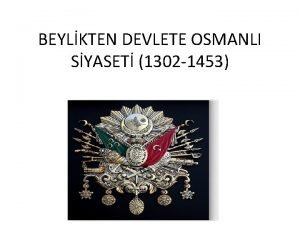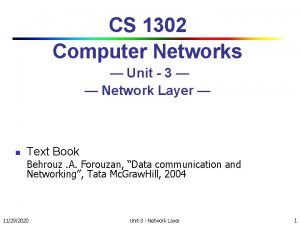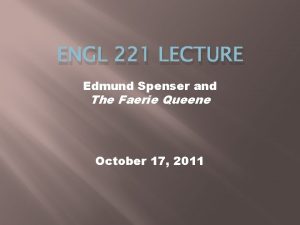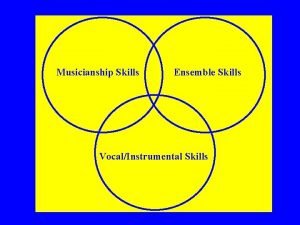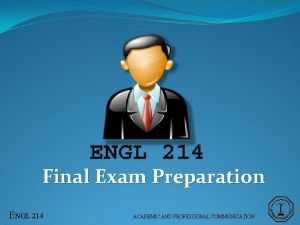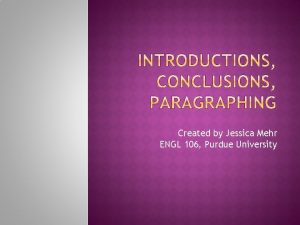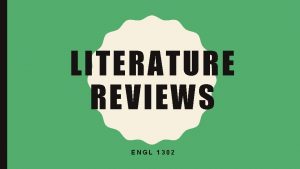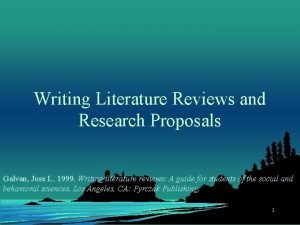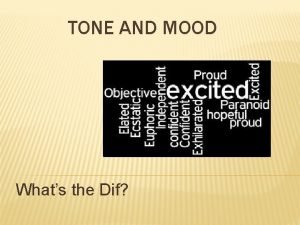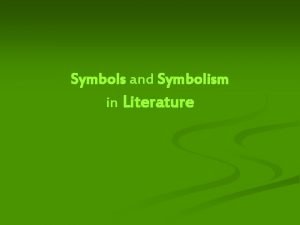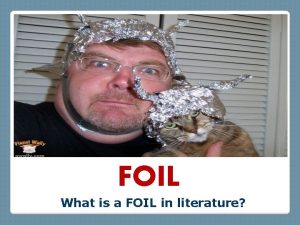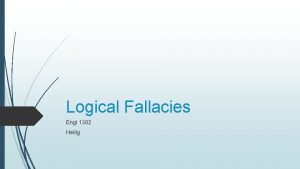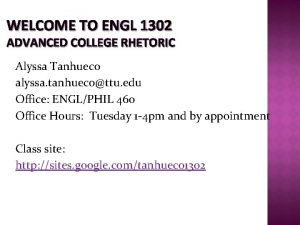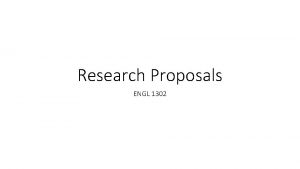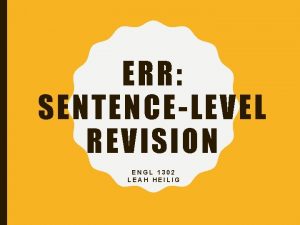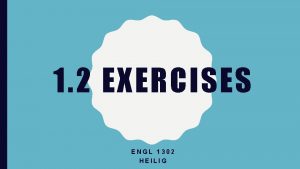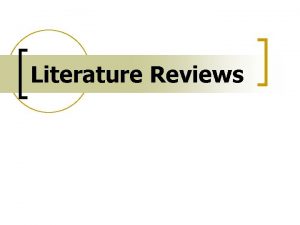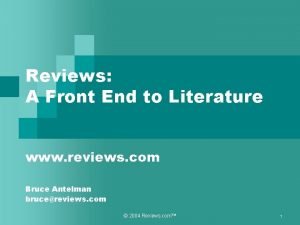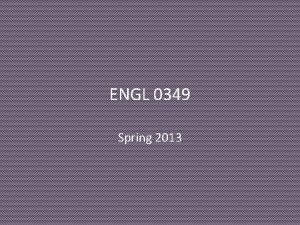LITERATURE REVIEWS ENGL 1302 WHATS A LITERATURE REVIEW


















- Slides: 18

LITERATURE REVIEWS ENGL 1302

WHAT’S A LITERATURE REVIEW? • No novels! • A summary, synthesis, and analysis of scholarly articles • Driven and organized by concepts or themes • Not an annotated bibliography!

WHY DO ONE? • Demonstrates the research you have currently done on a topic • Allows you to identify “gaps” in the research • Helps establish your ethos (you’re an Adult) • Lets you contribute something new to the conversation (Burkean Parlor)

YOUR ASSIGNMENT • Eight scholarly sources • 1500 word minimum • MLA formatting for both in-text and Works Cited (will be graded!) • Needs a thesis statement that is focused on the research you are studying

GETTING STARTED: THESIS STATEMENT • Reread your annotated bibliography, what are the main ideas? Try to find 3 -5 focal points between your sources and write them down. Research area topic area

GETTING STARTED: THESIS STATEMENT The thesis statement for a literature review should not be making your argumentative claim. Instead, think of it as steps one and two of your research proposal: –What’s your topic and why is it important? –What’s been said about your topic so far?

THESIS STATEMENT: EXAMPLE Parents should limit their children to one hour of television a day to help combat the childhood obesity epidemic. This thesis is good for an argumentative paper, but not for a literature review

THESIS STATEMENT: EXAMPLE Current research on childhood obesity and television focuses on the time children spend watching television, the content of the television shows and commercials, and the food children typically consume while watching television. Though previous research has suggested that limiting television was the key to helping children maintain a healthy weight, new research shows that changing the content of children’s television shows and commercials to reflect a healthy lifestyle is also key.

WRITE A THESIS STATEMENT • Should focus on what is happening in the research • Give the areas of focus • Demonstrate any insights gained from the research • See page 624 in First-Year Writing

GETTING STARTED: MAPPING CONCEPTS • Look at the 3 -5 focal points from your annotated bibliography • Give your list of focal points and annotated bibliography to a partner • Partners: underline/highlight where you see these focal points in their annotations • Try to color code/differentiate between these focal points

GETTING STARTED: MAPPING CONCEPTS • Start thinking about how you can synthesize these ideas • A literature review should be focused on synthesis, not summary • Focus on concepts, not articles or authors (pg. 617 in FYW) • Make a rough draft of the potential headers you might use (see pg. 617 in First-Year Writing)

PITFALLS: ALPHABET SOUP Courtesy of Dr. Angela Eaton, TTU • When multiple sentences start out with authors, articles, names, or dates that the reader has never heard of • Bad because it weakens transitions, flow, and topic sentences • Bad because it “info dumps” on the reader • On pg. 617 in FYW, underline how many times an author’s name or article title starts a sentence in the student’s lit review • Pick one sentence and revise it (you will turn this in)

PITFALLS: QUOTED MATERIAL • Bad because the research is speaking for you • Bad because it doesn’t give evidence that you understand the assignment or objectives • Follow the Lester Faigley Advice: no more than 10% of a paper should consist of quoted material and those quotes should be highly selective • Underline or highlight how much material is directly quoted in the student’s lit review. Good amount? Bad amount? • Alternatives to direct quotes: summary, paraphrase

PITFALLS: ANNOTATED BIBLIOGRAPHY • Your lit review should NOT be the same as your annotated bibliography • Lit review is topic or concept driven, not driven by sources • Lit review’s main focus is synthesis, not summary or evaluation

PARTS OF A LITERATURE REVIEW: INTRODUCTION Should have… • Your thesis statement • What your topic is and why it’s important • A brief discussion of how you narrowed down your topic • An answer to “So What? ”

PARTS OF A LITERATURE REVIEW: BODY PARAGRAPHS • Examine and discuss the articles • Help your reader make connections between them (synthesis) • Give a clear structure that makes it obvious how you have grouped your concepts • Strong transitions • Strong topic sentences • Direct quotes used sparingly (and never as topic or standalone sentences!)

PARTS OF A LITERATURE REVIEW: CONCLUSION • Return to why this research was important for understanding your topic • Apply this research to your future argument • Synthesize the main concepts you’ve discussed • Return to why this research was important for your field/topic • If possible, discuss where you see a “gap” in the

FURTHER RESOURCES • Reading assignments 3 -5 on Raider. Writer • Introduction to Literature Reviews by Dr. Lang/TTU’s Composition Program • St. Martin’s Handbook, pages 222 -224 (synthesizing sources) • St. Martin’s Handbook, pages 232 -239 (integrating sources) • Dr. Angela Eaton’s “Alphabet Soup” • Sample Literature Reviews, First-Year Writing textbook: – First drafts: 617 -620, 621 -624 – Second drafts: 628 -631, 632 -636
 Osmanlı 1302
Osmanlı 1302 Head start performance standards 1302
Head start performance standards 1302 Cs 1302
Cs 1302 Edmund engl
Edmund engl Engl 5440u study guide
Engl 5440u study guide Engl 214
Engl 214 Jessica mehr
Jessica mehr Whats literature review
Whats literature review Writing literature reviews galvan
Writing literature reviews galvan Whats hot whats not
Whats hot whats not Critical review example
Critical review example Chapter review motion part a vocabulary review answer key
Chapter review motion part a vocabulary review answer key Writ of certiorari ap gov example
Writ of certiorari ap gov example Nader amin-salehi
Nader amin-salehi Prisma diagram example
Prisma diagram example Narrative review vs systematic review
Narrative review vs systematic review Bursting through the door the flustered
Bursting through the door the flustered Literature
Literature In literature what is a foil
In literature what is a foil
